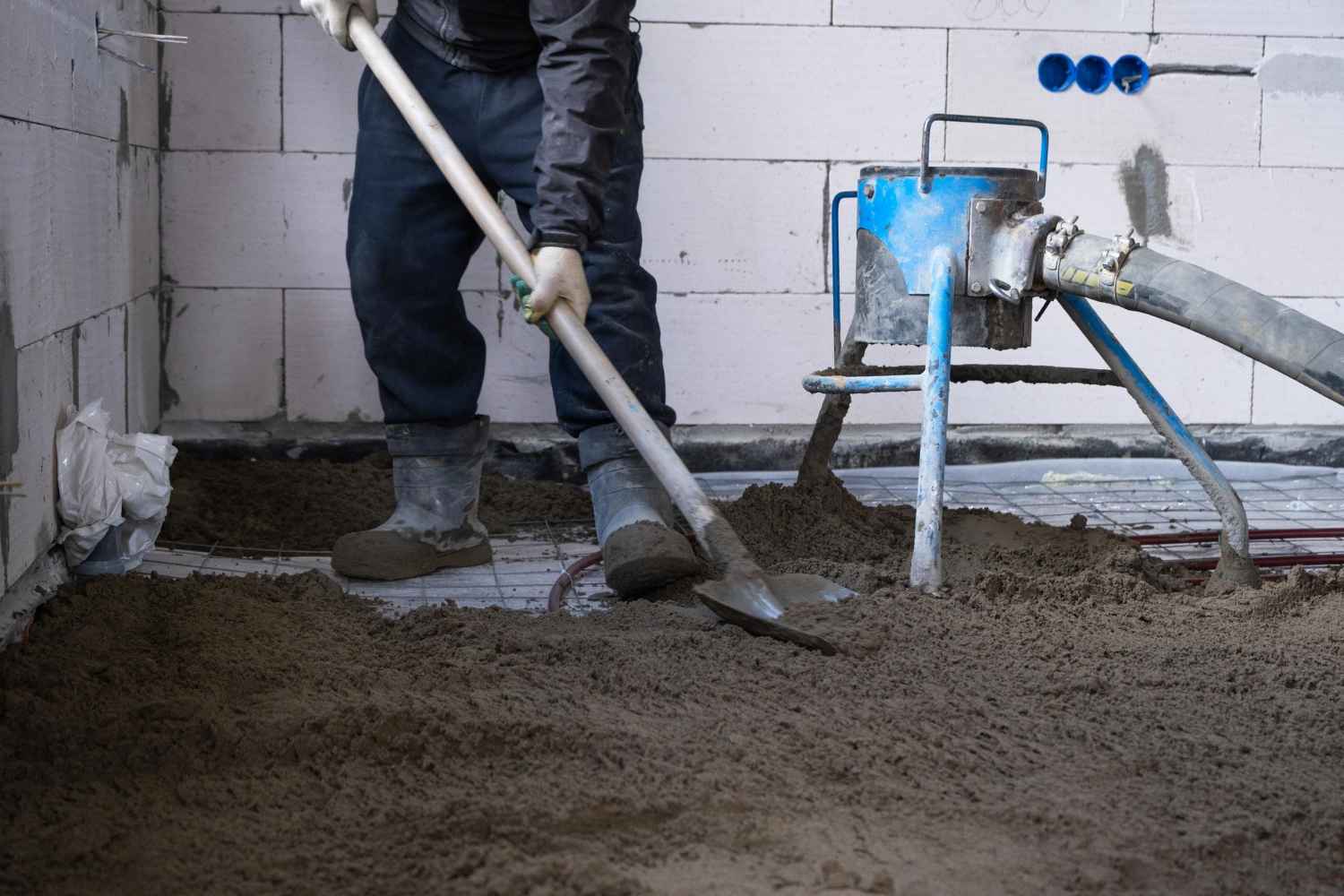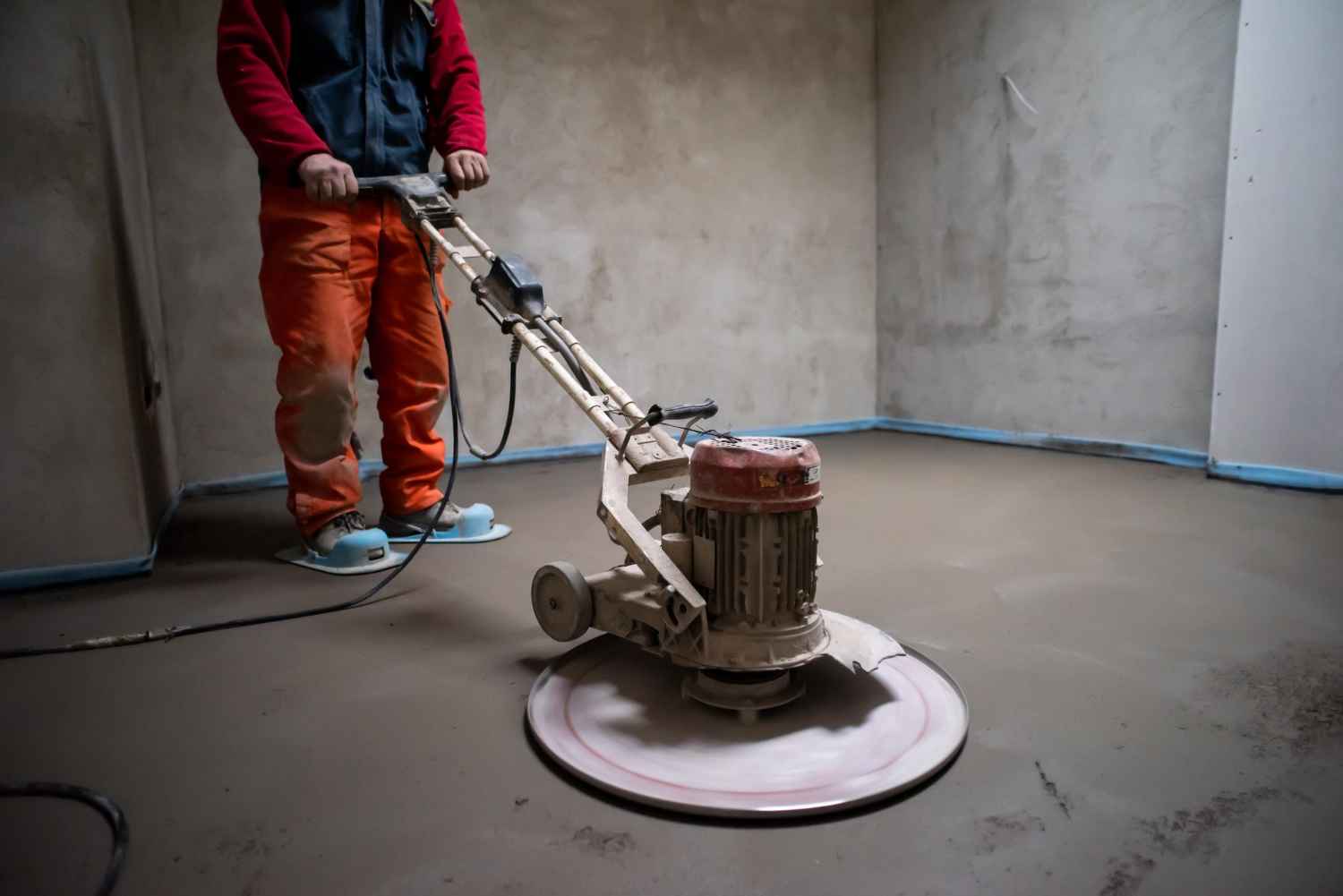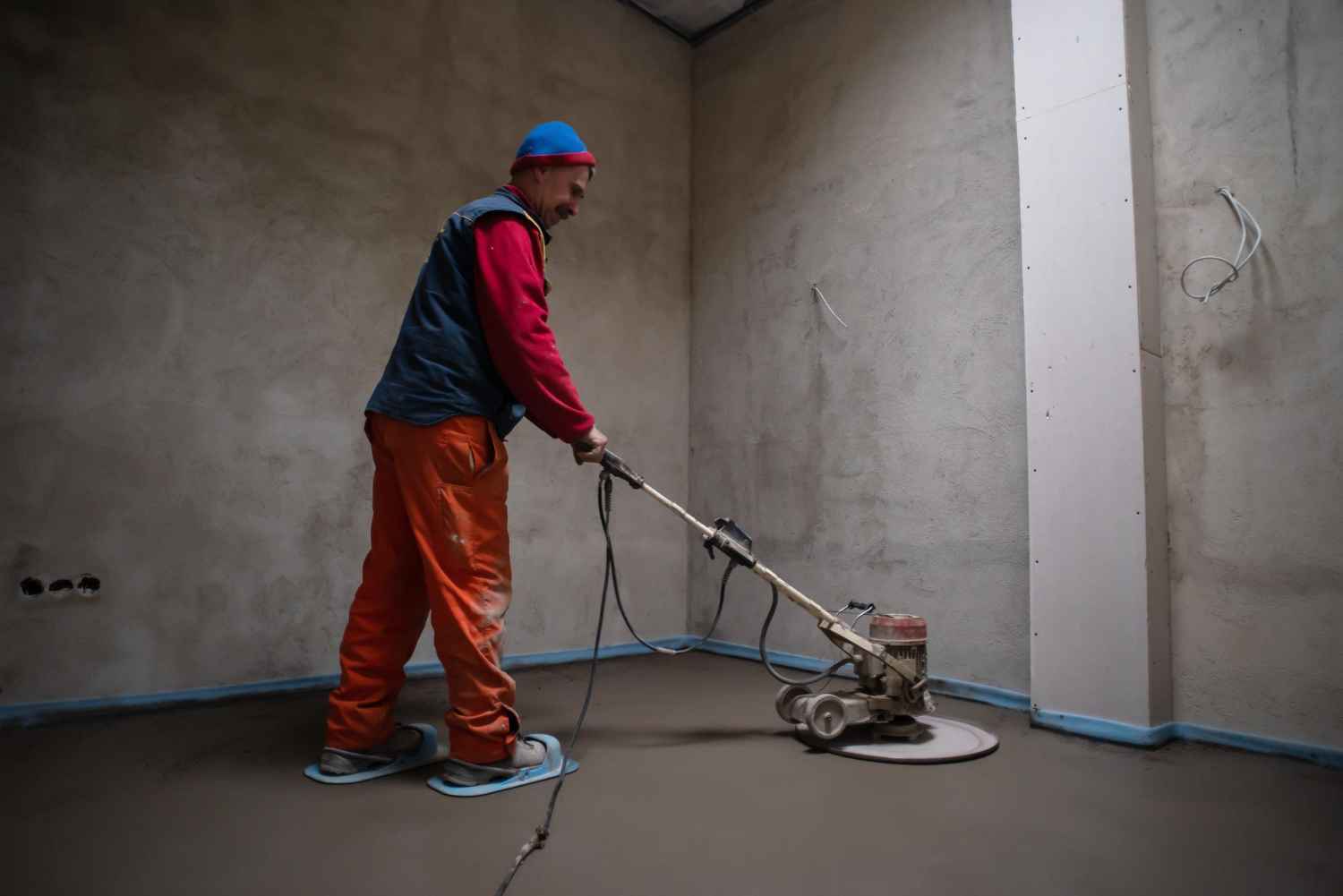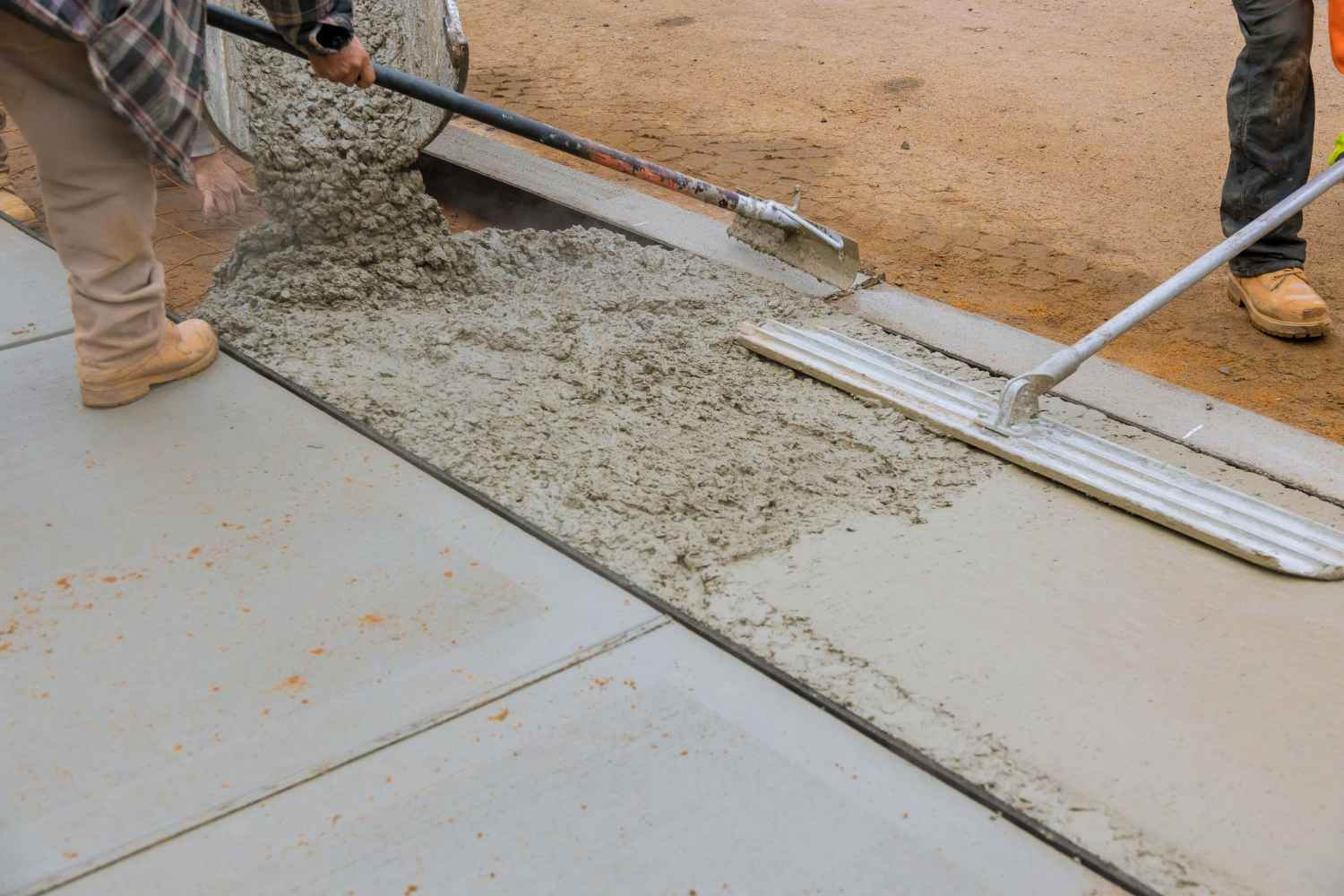A self-levelling screed is designed to form a level floor for the application of floor finishes, such as tiles, hardwood, or carpet. This flooring material can self-level when poured, making it the best for domestic and commercial buildings.
However, how does self-levelling screed work, and what isn’t it? The major concerns of this blog post include an analysis of different aspects of a self-levelling screed: its features, merits, uses, and working mechanism.
A self-levelling screed is a cementitious material reinforced with polymers used in flooring to produce a level floor surface. This screed does not contain any coarse aggregate and is engineered so that when it is poured, it easily self-levels and self-compacts.
When applied, the screed forms a stable, dense, and consistent surface onto which any floor covering, such as tiles, wood, carpet, vinyl, etc., can effectively be laid. Self-levelling screeds are most preferred where no slope is desired, and the base needs to be flat and level.
They are used mostly in conjunction with underfloor heating since the gases are highly fluent and can easily pass through the heating pipes to provide uniform heating.

Due to these advantages, self-levelling screed is popular for use within many flooring projects. Here are a few of the main benefits:
Applying a self-levelling screed is simple, and the resulting floor is perfectly smooth. Below are the 3 key steps that are typically involved in the process:
The first process is to prepare the self-levelling screed according to the manufacturer’s recommended manufacturing guidelines. A concrete plan for this step is important to give the screed a fine finish when it is poured. The screed often consists of fine sand, cement, and a polymer-based solution with water.
Ensure the screed is well mixed so it does not leave lumps or dry patches on the floor. The right consistency is important so that the screed can be applied uniformly over the substrate without the threat of creating big pools of screed on the surface or big gaps with the screed left bare between pools.

After preparing the screed mix, it is applied to the prepared substrate. It must be spread smoothly and rapidly to cover the area and reach any minor depressions or irregularities on the floor.
The screed should be poured in sections, ensuring it covers the entire surface uniformly. While pouring, it is important to work quickly, as some self-levelling compounds may begin to set within a short time frame.
One of the standout features of a self-levelling screed is its ability to level itself automatically. This is because of the polymer additives in the screed, which create a surface tension that enables the material to flow and level itself out without the need for smoothing tools or trowels.
As the screed is poured, it fills any low spots and smooths over uneven areas, creating a flat surface. The screed will naturally level itself within a few minutes, and once set, it will provide a smooth, stable base for floor coverings.
Self-levelling screed is highly versatile and can be used for various applications, making it a go-to solution for many different flooring needs. Some of the key uses include:
One of the most common uses of self-levelling screed is to create a smooth, even surface for tiling. An even base is crucial when laying tiles, as any bumps or imperfections in the surface can cause tiles to crack or become uneven. Self-levelling screed ensures that the floor is perfectly flat, helping to prevent issues such as tile cracking or shifting.

Self-levelling screed is also a preferred choice for encasing underfloor heating pipes. Its ability to flow around complex shapes, such as pipes, makes it ideal for creating a seamless, efficient layer over underfloor heating systems. This application helps ensure even heat distribution across the floor, improving the heating system’s overall efficiency.
While commonly used indoors, self-levelling screed can also be applied in outdoor environments, such as patios, driveways, and swimming pool areas. Its durability and resistance to weathering make it suitable for various external applications. Whether for a driveway, garage floor, or patio, a self-levelling screed provides a smooth, durable surface that can withstand outdoor conditions.
Several factors influence the cost of installing self-levelling screed, here are the key considerations:

Self-levelling screed offers a convenient, efficient way to achieve a perfectly smooth floor, ideal for various applications. It is versatile, easy to apply, and provides a durable, stable base for floor coverings.
While the initial cost of installation can vary depending on factors such as material quality, area size, and labour, the long-term benefits—such as improved surface flatness, better heat transfer for underfloor heating, and reduced future maintenance—make it a worthwhile investment for both residential and commercial flooring projects.
A boom pump uses a robotic arm (boom) to deliver concrete with precision at height or distance, making it ideal for large-scale and high-rise projects. A line pump, on the other hand, is better suited for smaller, ground-level jobs and uses flexible hoses to deliver concrete. We offer both types depending on your project requirements.
With a boom pump, concrete can be pumped up to 70 metres vertically and over 200 metres horizontally. Line pumps can reach around 150 metres horizontally, depending on the setup and hose diameter. Our experts will assess your site and recommend the best solution to reach even the most challenging locations.
Yes, it’s important to ensure the site is accessible, level, and free from obstructions. There should be enough space for the pump vehicle to park and operate safely. If you’re unsure about access or clearance, our team can provide advice or arrange a pre-site visit.
The duration of a concrete pumping job depends on the volume and complexity of the pour. In general, a typical residential pour can be completed in under two hours. Our efficient service aims to minimise downtime and keep your construction project on schedule.
Yes, concrete pumps can operate in light rain and mild weather conditions, but heavy rain, high winds, or frozen ground may delay or halt operations for safety reasons. We always monitor the forecast and keep you informed of any possible schedule changes.
Yes, all our pump hires include a trained and experienced operator who will handle the equipment and ensure concrete is placed efficiently and safely. They’ll also help guide you through the process on-site, ensuring a smooth pour every time.
Ready Mix Concrete London (Trading as Pro-Mix Concrete Ltd)
Copyright © 2025 | Ready Mix Concrete London (Trading as Pro-Mix Concrete Ltd) | All Rights Reserved.